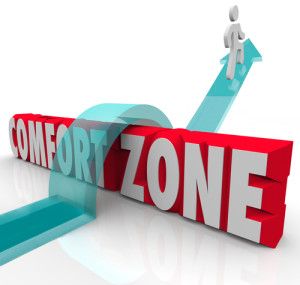
You may find it difficult to keep your entire home comfortable with an HVAC system that’s controlled by a single thermostat. In fact, in most homes, it’s pretty well impossible. In a zoned system, two or more areas of your home are served by individual thermostats so that you have better control over the temperature in those areas. The best time to install a zoning system is when you are building a new home or installing a new HVAC system, but it’s also possible to realize zoning system benefits by retrofitting an existing system with zoning controls.
How a Zoning System Works
Critical parts of a zoning system include two or more individually programmable thermostats, a central controller for the cooling and heating, and motorized baffles that open and close to manage airflow into separate zones. Zoning systems can also be installed in hydronic heating systems that carry hot water from a boiler to radiators or in-floor heating loops throughout a house.
One of the most common configurations for a zoning system is for a two-story house, where each floor has a thermostat to control heating and cooling. Since hot air rises, the upper floor usually does not require as much heat directly from the furnace in winter, but it requires more conditioned cool air in the summer than the lower floor.
When the thermostat on the upper floor calls for cool air, but the lower floor is already at a temperature below its thermostat setting, the baffles controlling airflow to the lower floor will close while the air conditioner turns on and delivers cool air to the upper floor. Conversely, in winter the thermostat on the lower floor may send a signal to turn the furnace on while the upper floor is already above its thermostat set temperature. In that case, the motorized baffles will shut off airflow to the upper floor while the furnace delivers heat downstairs.
Zoning System Benefits
A properly designed and constructed zoned HVAC system has several advantages over a system with a single thermostat. Here are a few zoning system benefits:
- The temperature in different parts of the house can be set individually to keep each area comfortable for its occupants. For example, you can set up your zoning system so that the kitchen and dining room are controlled by one thermostat, while the bedrooms are controlled by another thermostat, and the rec room in the converted attic is controlled by a third one. If the rec room is not being used, you can set its thermostat so that the heating or air conditioning rarely comes on, while you have the kitchen zone set for the most comfortable temperature for the cook. You can program the thermostat that controls the bedrooms for comfortable sleeping temperatures at night and energy-saving levels during the day.
- A zoning system can lower your energy bills. By tailoring temperature settings in each part of your house to match activity levels throughout the day, you can minimize energy use and reduce your monthly heating and cooling bills significantly.
- A zoning system can increase equipment life. If your system is designed with the right sized ductwork and heating and cooling equipment, using your zoning system can reduce the load on your air handling equipment and air conditioning compressor, and extend their useful lives by several years. On the other hand, if your system is not designed to maintain correct airflow in every zoning configuration, you may shorten your equipment life due to short-cycling and creating pressure imbalances in your ductwork.
Coping Without a Zoned System
One of the biggest zoning system benefits is that it takes care of balancing your home’s energy needs without a lot of input from you, once you have the thermostats programmed for optimum system performance. If you do not have a zoned HVAC system, there are steps you can take, and some that you should avoid, to improve your home comfort:
- Upgrade insulation to minimize heat imbalances between floors and between the sunny and shaded areas of your home. Operate ceiling fans and open and close windows to take advantage of natural ventilation.
- Do not try to manually zone your HVAC system by closing vents or doors to shut-off rooms. Doing so will unbalance your HVAC system’s airflow and pressures and can lead to shortened equipment life.
Call us at Meyer’s for help with heating and cooling your Northern Indiana home. We can design and install a zoning system that will increase your home comfort and reduce your monthly energy bills.



.png)